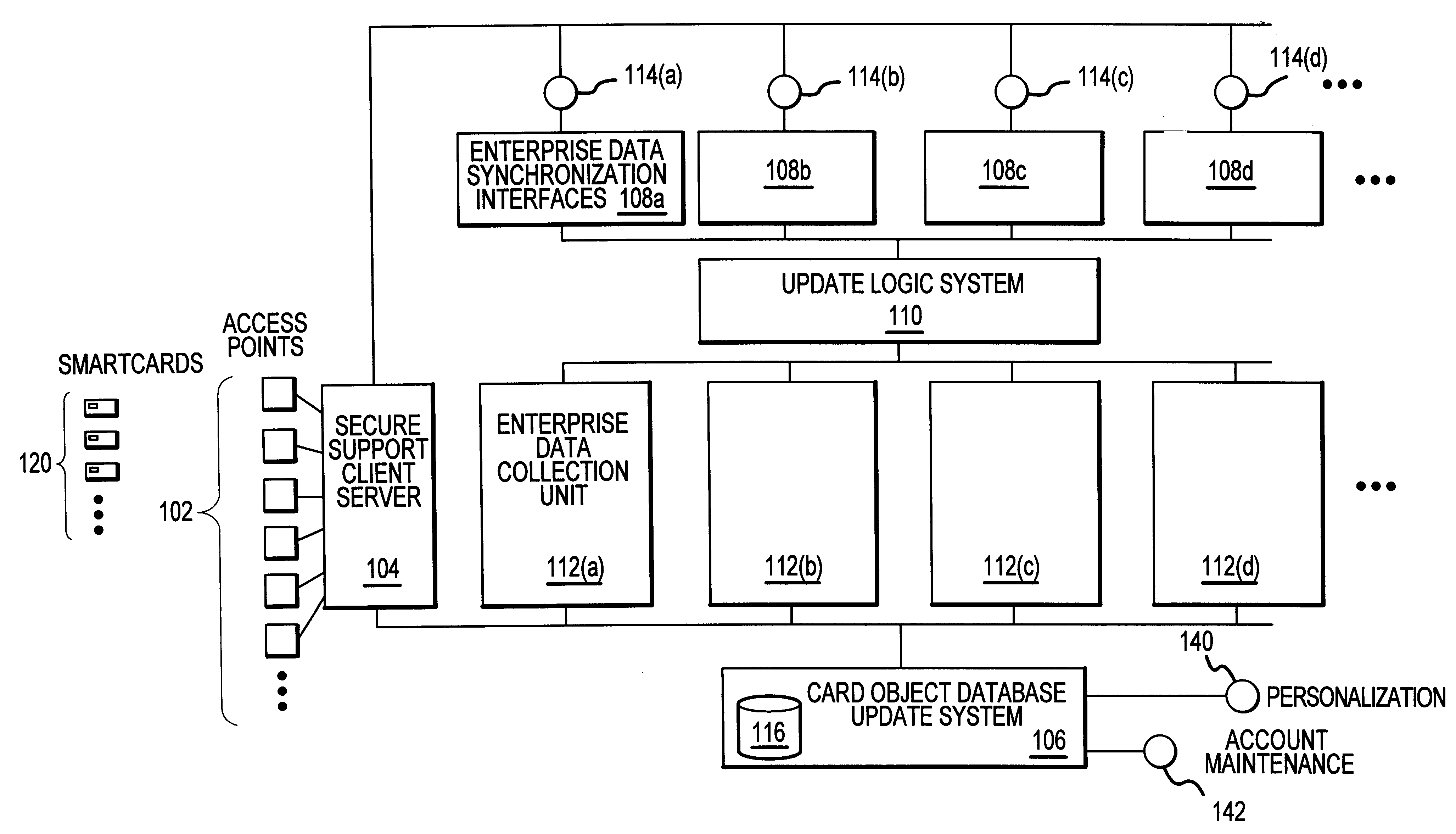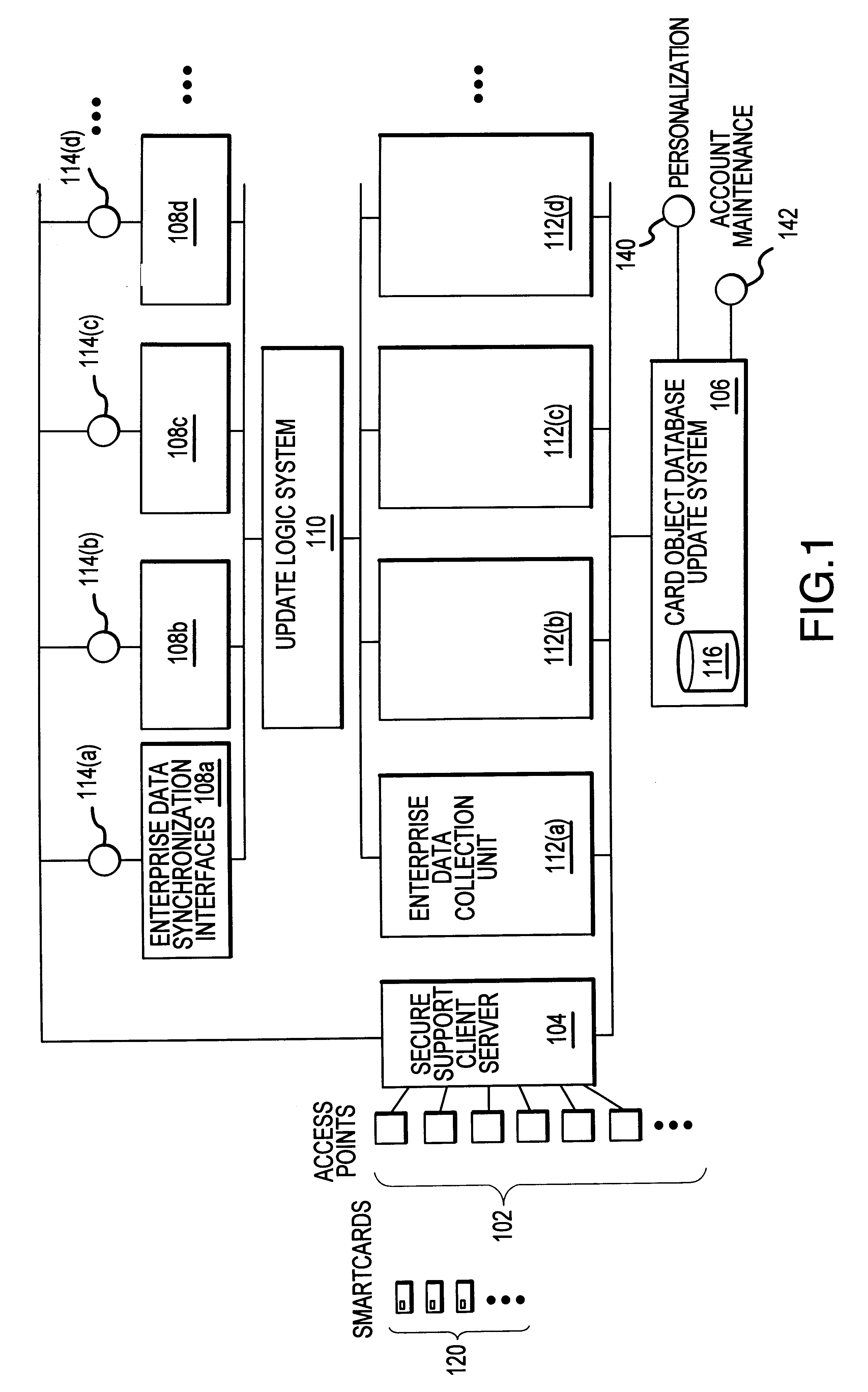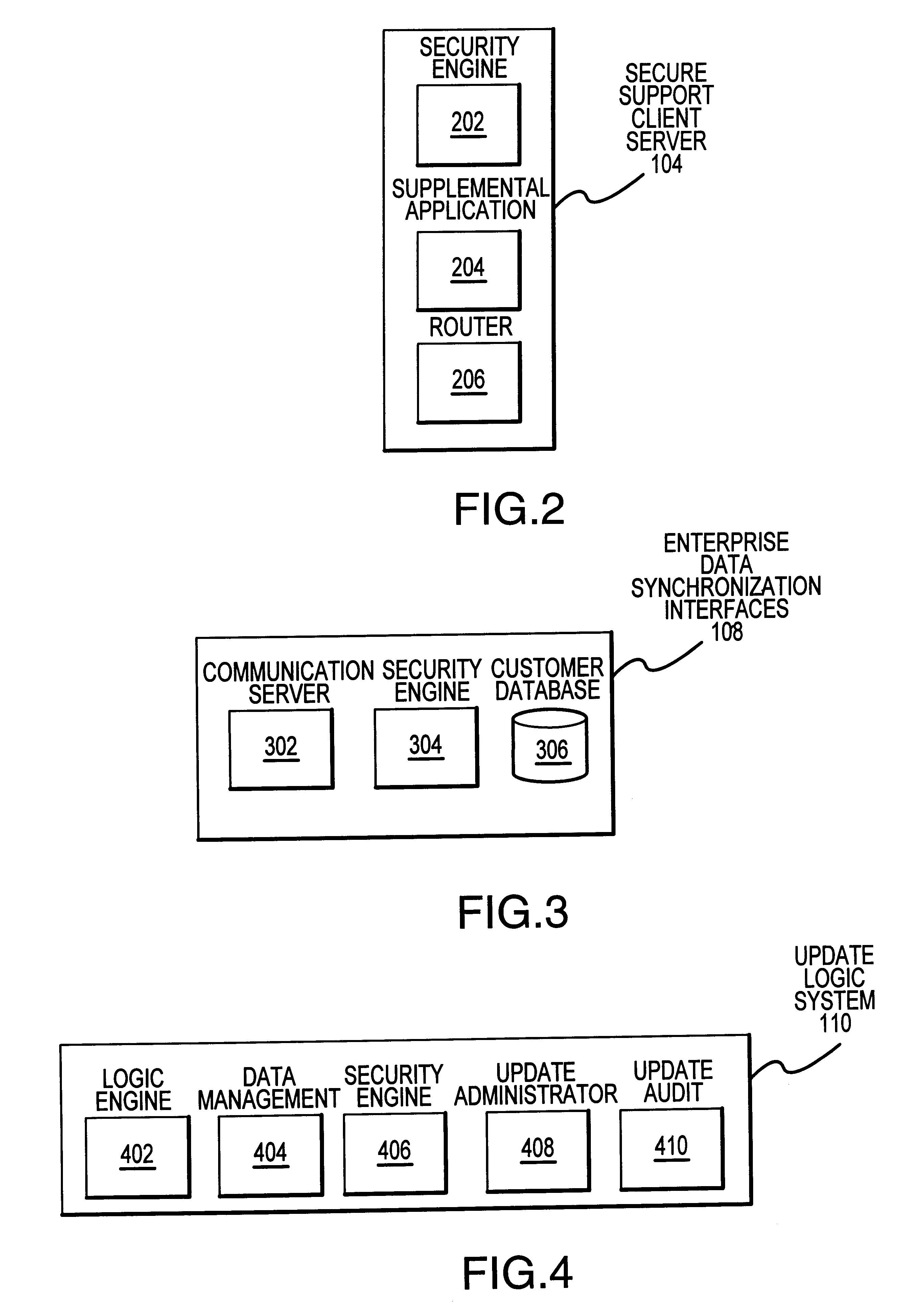Methods and apparatus for dynamic smartcard synchronization and personalization
a smartcard and synchronization technology, applied in the field of dynamic smartcard synchronization and personalization description, can solve the problems of insufficient system, inability to provide efficient and reliable methods, and present system failure to ensure that lost or stolen cards may be reissued or replaced with up-to-date information
- Summary
- Abstract
- Description
- Claims
- Application Information
AI Technical Summary
Problems solved by technology
Method used
Image
Examples
example 1
Update Transactions
It is quite common for a cardholder to make a local change to smartcard 120 which is not immediately reflected in all the databases which could advantageously make use of this information. For example, suppose that upon initialization (i.e., when the card was originally issued via personalization system 140) the cardholder's smartcard 120 was configured to reflect a general preference for smoking (e.g., one file contains a Boolean field keyed to smoking / non-smoking), but the cardholder now wishes to change this general preference file to reflect a non-smoking preference.
In this case, referring now to FIGS. 1, 7 with respect to a preferred embodiment of the present invention, the cardholder suitably inserts card 120 into a conveniently located access point 102, whereupon authentication of the card and / or card-reader takes place (Step 802). In a preferred embodiment, authentication takes place in accordance with relevant sections of the ISO 7816 standard.
Next, the c...
example 2
Pending Transaction
The cardholder might make a change or perform a transaction through a channel that does not directly involve smartcard 120, thus creating an inconsistency between the data in smartcard 120 and the data in various databases throughout the DSS. Such a case might arise, for example, when the cardholder calls a hotel to make a reservation (rather than performing the transaction on line using smartcard 120) and makes an oral request to change his preferences from smoking to non-smoking. Referring now to FIGS. 1 and 7, in this case, with respect to a preferred embodiment of the present invention, the cardholder first contacts an enterprise through a means that does not include smartcard 120--i.e., a "smartcard not present" transaction (Step 702). Using an appropriate interface (voice, keypad, etc.), a change or transaction is selected (Step 704). This change is then stored locally within a particular enterprise network 114 and / or is stored within an EDSI 108 (Step 706)....
example 3
File Structure / Application Change
In addition to the data-related modifications detailed above, changes to the structure of data stored in smartcard 120 might also be desirable in certain contexts. That is, during the life of a smartcard, it is likely that the card issuer, a partnering enterprise, or the cardholder himself may desire to extend the card's functionality by augmenting the suite of applications housed within the card. For example, a cardholder who uses a smartcard for rental car and airline reservations might also wish to use the card for acquiring and paying for hotel reservations. In such a case, the appropriate hotel partner may process the cardholder's request and arrange for addition of a hotel application to be added to the smartcard file structure. In another example, the smartcard issuer might authorize the addition of a new application on its own, for example, a credit and / or debit application. Conversely, it may also be appropriate in some instances to remove a...
PUM
 Login to View More
Login to View More Abstract
Description
Claims
Application Information
 Login to View More
Login to View More - R&D
- Intellectual Property
- Life Sciences
- Materials
- Tech Scout
- Unparalleled Data Quality
- Higher Quality Content
- 60% Fewer Hallucinations
Browse by: Latest US Patents, China's latest patents, Technical Efficacy Thesaurus, Application Domain, Technology Topic, Popular Technical Reports.
© 2025 PatSnap. All rights reserved.Legal|Privacy policy|Modern Slavery Act Transparency Statement|Sitemap|About US| Contact US: help@patsnap.com



